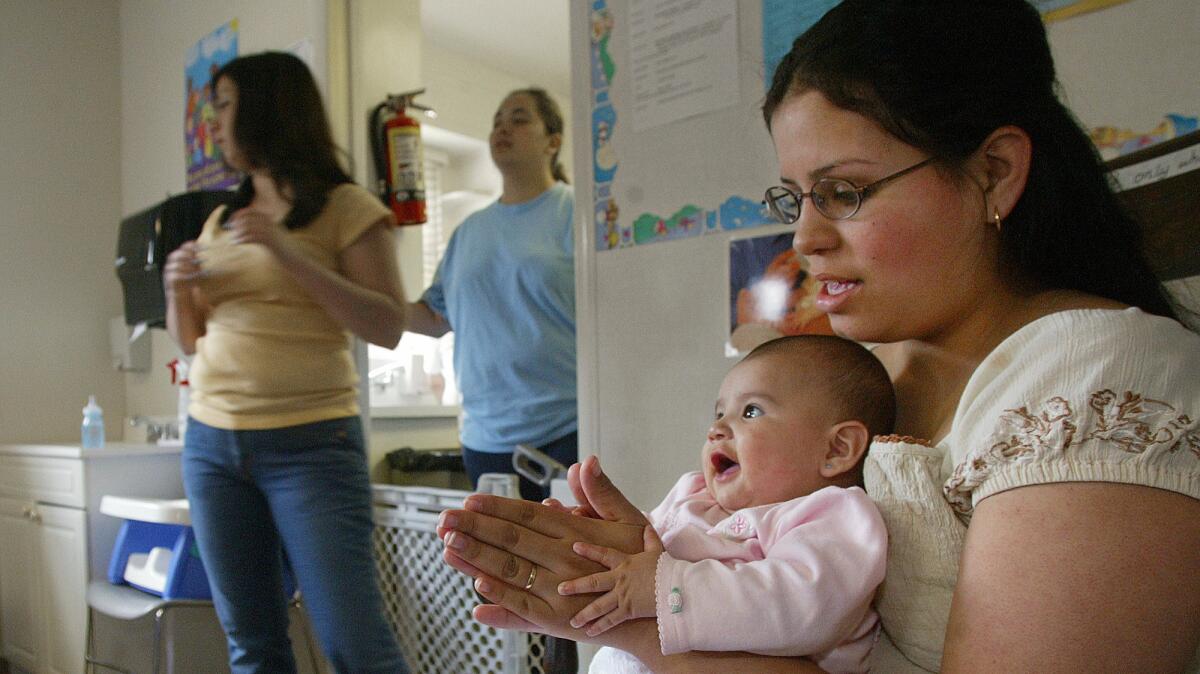Teen birth rate in the U.S. hits record low for 7th consecutive year

The birth rate for U.S. teenagers hit an all-time low in 2015, the seventh straight year a new record has been set.
Overall, there were 22.3 births for every 1,000 young women between 15 and 19, according to a report released Wednesday by the Centers for Disease Control and Prevention. That represents an 8% drop in just one year.
Declines like this add up. The teen birth rate is now 46% lower than it was in 2007 and 64% lower than in 1991, researchers at the CDC’s National Center for Health Statistics found.
That means the teen birth rate in the U.S. is now comparable to the rate in the African nation of Djibouti. It’s also closing in on those of Albania, the Slovak Republic and Serbia, according to data from the United Nations.
See the most-read stories in Science this hour »
But despite the steady progress of American teens, they still lag far behind other industrialized nations. In Switzerland, for example, there are only 3 births for every 1,000 young women between the ages of 15 and 19.
In the U.S., the group that came closest to a figure that low was Asian Americans and Pacific Islanders. For every 1,000 Asian teens, there were 6.9 births.
Behind them were whites (16 births per 1,000 teens), Native Americans (25.7 births per 1,000 teens), African Americans (31.8 births per 1,000 teens) and Latinas (34.9 births per 1,000 teens). The birth rate for each of these groups declined over the last year, according to the report.
In addition, the gap between groups has narrowed substantially over the last 25 years. In 1991, the difference between the highest birth rate (104.6 births per 1,000 Latina teens) and the lowest (27.3 births per 1,000 Asian American teens) was 77 births per 1,000 teens. By 2015, the corresponding difference was 28 births per 1,000 teens.
The authors of the report attributed the across-the-board improvement to “declines in the proportion of teenagers who have ever had sex and, for sexually active teenagers, increases in the use of effective contraception practices,” they wrote. They also credited “increases in teen pregnancy prevention programs.”
Follow me on Twitter @LATkarenkaplan and “like” Los Angeles Times Science & Health on Facebook.
MORE IN SCIENCE:
Baby boy with DNA from 3 people offers hope for moms who would pass on deadly genetic diseases
Narcissists may start out popular, but people see through them in the long run
Try riding a roller coaster to dislodge those painful kidney stones




